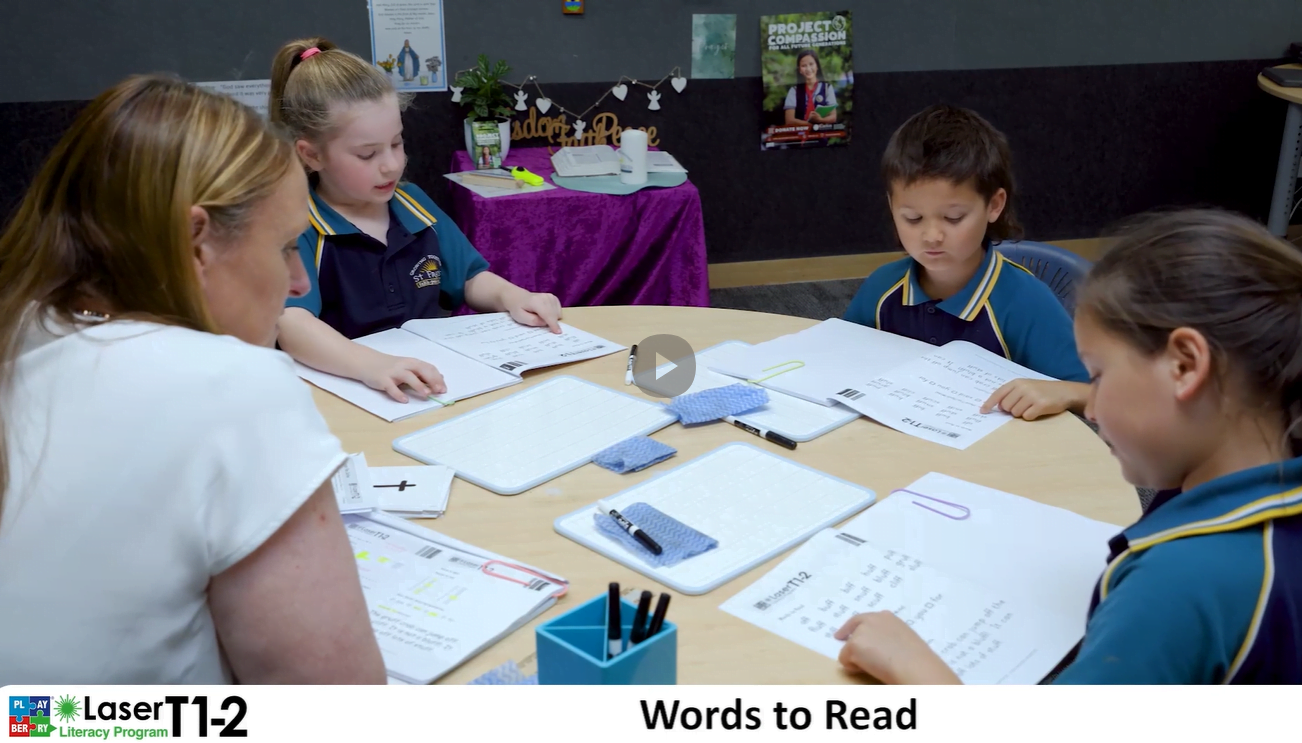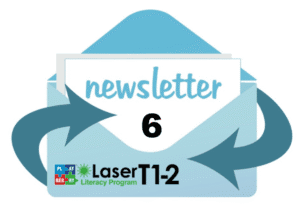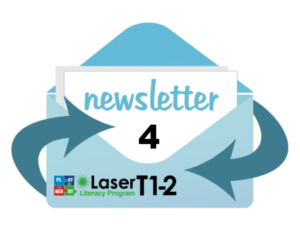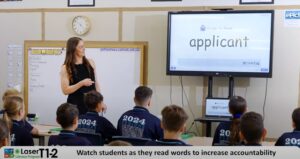Masterclass Notes: Linda Clune
Tier 2 Playberry Laser Intervention Lesson
IMPORTANT: Your intervention groups will take time to run as smoothly as this one. St Francis Lockleys has been running intervention groups for many years. All intervention staff are trained in Playberry Tier 3 (TSD levels 1-3) and Playberry-Laser Tier 2, and ongoing coaching occurs.
This is a running log of a tier 2 intervention lesson. I’ve meticulously noted Linda’s strategies, which might not be immediately apparent to someone new to this teaching intervention. These strategies, highlighted for their efficacy, keep the lesson moving at a good pace and ensure students adhere to established routines. Students are consistently directed to focus where Linda wants them to and to think about what Linda wants them to, effectively managing their cognitive load.
Please take note of Linda’s voice as she corrects errors. There is a distinct absence of annoyance or grumpiness when students make errors or seem unsure. This is of the utmost importance to intervention students. They are likelier to engage and learn if intervention teachers maintain a positive and patient demeanour despite persistent mistakes or forgetfulness. This approach can help prevent resistant or disruptive behaviours in students who externalise their embarrassment and encourage others to remain engaged.
Alphabet Activity
The teacher planner looks like this. Linda has chosen letter naming as the alphabet activity for this lesson. Linda uses upper- and lower-case letters for the alphabet card deck.

Linda reminds students they are naming letters:
“The names that we say when we say the alphabet.”
Linda checks each student to see if they are naming the correct letter. Some unsure students will very cleverly delay a fraction of a second, wait for other students to begin, and then jump in. They can also be drowned out by the voices of the more certain students, so reading their lips is essential.
When there’s a slight delay or error, Linda keeps the letter up, asking,
“What’s this one?”
In a light, friendly tone.
Linda’s eyes move from the card deck to each student as she checks their knowledge of letter names. She also picks up the pace of the cards to stretch the students a little. In the end, Linda praises the students for their speed and accuracy.
Notice that with a particularly chatty student to Linda’s left, Linda cues her to stop talking with a closing hand.

PA Activity (Phonological Awareness)
The teacher planner would look like this with the intervention teacher’s writing showing the resource being used:

Linda’s using David Kilpatrick’s “Equipped for Reading Success[1].” All students in this group have been screened using Kilpatrick’s PAST assessment, and Linda chose this level based on their results. Linda’s eyes move between students as she checks their mouths to check the ease with which they execute the phoneme substitution tasks. Students who are not yet proficient will often watch other students’ mouths.
“Now we’re going to go onto our phonemic awareness, so I’m going to get you to say some words, and then we’ll play with the sounds.
Are you ready?”
[1]Kilpatrick, D.A. (2016). Equipped for reading success: A comprehensive, step-by-step program for developing phoneme awareness and fluent word recognition. Syracuse, NY: Casey & Kirsch Publishers.
If the intervention teacher wants to check an individual student’s proficiency, they can ask students to complete items in a round-robin to check them individually. This is gentler than singling out a single student.
The routine involves:
- Linda saying a complete word
- The students chorally repeating the complete word
- Linda then gives the phoneme manipulation task to the students
- Students complete the phoneme manipulation task as Linda carefully listens and watches.
Notice that Linda uses a hand gesture at the start of this routine (extends hand palm up) to cue students that it is their turn to respond. This group are well drilled in the intervention routine.
When students accidentally respond at the wrong time, quickly and kindly say “My turn” and then “Your turn” when students have to respond. Do this as many times as necessary to embed the routine. In time, words can be replaced with hand cues, which can also be removed eventually (like they have been with these students).
Notice that Linda praises students as they go. This is easily missed but vital to student motivation and ongoing compliance from students.
Linda finishes with:
“Lovely, I love how you are all watching me too; that’s brilliant. Good Job.”
This narration of what the students were getting correct during the PA routine (watching Linda’s mouth) is critical to ensuring students remember the correct routine the next time and encourages more student cooperation.







